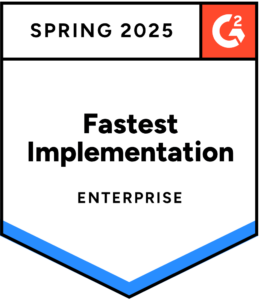Why A Traditional, Manual Balance Sheet Reconciliation Process Is Risky For Your Organization
Blog post
Share
Remember paper maps? They always came along for the ride, tucked into the open compartment on the inside of the car door. With its folds, creases and coffee stains, the road map was a trusted driving companion. Years later, smartphones made their entrance into the market and allowed users to more easily enter a location and navigate to their destination more simply. The days of paper maps that always seemed to keep unfolding came to an end.
Just like paper maps, many finance organizations are still working with ad hoc routines, siloed systems and cumbersome spreadsheets. To keep up with the competition and an ever-evolving landscape, more and more organizations are simplifying and streamlining their processes, such as balance sheet reconciliations, through automation.
Balance sheet reconciliations are one of the most time-consuming tasks in any finance and accounting department. For many years, manual reconciliations have been the go-to approach for accounting professionals. But it’s time for accountants to transition from outdated technologies and processes and move towards more efficient and effective methods.
But first, in order to streamline your balance sheet reconciliation process, it’s important to identify areas of weakness and opportunity within your current process.
We All Love Spreadsheets But…
Spreadsheets have been the foundation of finance and accounting for decades, even as technology has changed dramatically during the same timeframe. There has also been a climactic shift in internal and external reporting requirements, as well as growing complexity in organizational structure and globalization. These changes have led to an escalated, heavy reliance upon spreadsheets which causes organizations to lose sight of the original purpose of the tool. Instead, by overextending the use of spreadsheets, decisions are being made based on potentially inaccurate data.
Studies have shown that as many as 88% of spreadsheets are materially incorrect. And more often than not, organizations are not even aware of incorrect data until it is too late. This is due to complacency and overconfidence in spreadsheets that have been repurposed or recycled. Many errors can also be attributed to faulty macros, which have not been thoroughly tested or documented.
While Excel® is ideal for some tasks, it’s not the most efficient solution for financial reconciliation. It requires a lot of time for programming and formatting to establish the import of data in addition to also ultimately preparing it to conduct the period end. Time and money are dedicated to simply managing data instead of using those valuable resources for critical analysis.
Inefficiency and Decreased Productivity
The use of spreadsheets and other desktop applications to try and manage the month-end close is inefficient for communication and collaboration between teams. With these methods, a significant amount of time is spent emailing, comparing versions, meeting, printing and re-entering data. This not only increases the probability for errors and fraud, but also takes away from time that could’ve been spent in a more meaningful and proactive way to move the business forward.
Spreadsheets have other limitations, such as being locked to other users when someone is working in it.
This creates an inefficient dependency environment where team members have to wait for their turn to begin working on their month-end tasks. Sometimes this creates a situation where someone has finished their work on the spreadsheet but forgets to send it over to the next person, or sends it and forgets to unlock it. This leads to a loss of time— an asset that is extremely valuable throughout this process.
Lack of Scalability
When the company experiences growth, manual processes can eventually become a stumbling block as the organization attempts to serve new customers and markets. A largely manual process cannot handle the organic or M&A growth of an organization. Finance and accounting teams face an ever-growing number of transactions, subledgers and external systems that continue to increase as the revenue of the business grows. An M&A process often brings even more data sources to manage which can include different currencies and formats. Rapid growth like this invites a high probability of risk, which is why it is imperative to have a streamlined and centralized process.
Risk of Human Error
Besides the amount of time required when working with manual entries, there is a high risk for human error. As a matter of fact, the error rate in manual reconciliations of accounts is between 0.8% and 1.8%. Initially, this error rate may appear trivial. However, if your company processes 100,000 transactions per day, this results in 800 to 1,800 errors happening daily which could lead to severe consequences, such as compliance violations and misstatements.
Conclusion
It is no secret that accountants love spreadsheets. However, financial processes that rely on spreadsheet systems and manual processes decrease close efficiency and introduce an unacceptable level of risk to the organization. Spreadsheets should shift from the role of primary financial technology to supplemental tool, as they were created to be.
To learn more about what shifting from a manual to an automated balance sheet reconciliation process looks like, read part two of this series: Benefits of Financial Automation in Your Balance Sheet Reconciliation Process.






